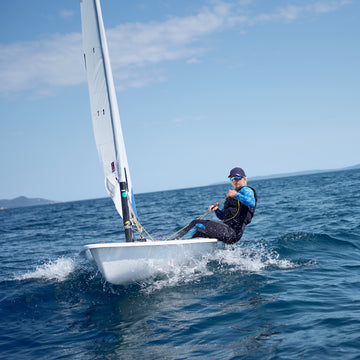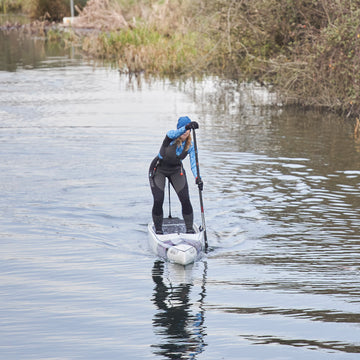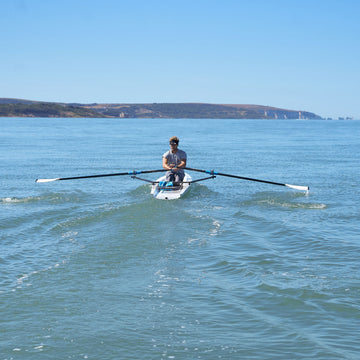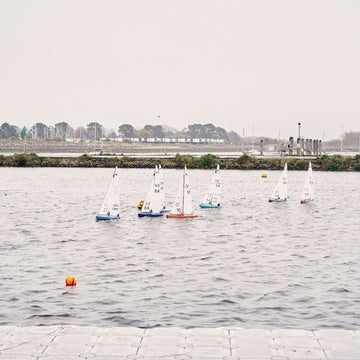- Get a length of plastic tube and use duct tape or similar to plug into the bung hole. Pressurise the hull with a few lung fulls of breath, seal the end of the tube and start painting fittings/seams with soapy water. There are some advantages to this method. For a start, the RS 300 fleet are no strangers to duct tape, it is used for a variety of purposes from sail maintenance to undercover repair. Also, its cheap and easy. But not the most elegant of solutions.
- Duct tape a compressor feed or a bike pump into the bung hole. Pressurise the hull and paint with soapy water. Not a method that I'd subscribe to, too much air from the compressor and you could be into major structural damage. You could make the problem worse.
So I decided to have a go at building an easy way to pressurise the hull in a slow controlled way. Also decided that the way to do this is using the foot pump that I have in the van to inflate everyone's trolley tyres. Here are the parts that I used :
That's a tubeless tyre valve, used on cars. The valve fitting is the same as a trolley wheel. They cost about 50p each, and you can buy them on eBay.

And that is a ALLEN A.323 DRAIN SOCKET BUNG COMPLETE - RS SCREW BUNG - it is low cost and you can buy it here. Here is the method:
- Drill a hole in the bung to accommodate the shaft of the valve. Use a file to centralise the hole if the drill wanders.
- Sand/file/cut down the thick end of the valve so that it has a diameter less than that of the bung hole.
- Use a hacksaw to key the rubber on the shaft of the valve. Key the hole in the bung with sandpaper.
- Glue the valve into the bung using thickened epoxy such as the Dr Sails product or the West G Flex 655 Epoxy. Be generous with the epoxy, you want an airtight seal between the boat parts
- Clean up excess epoxy such as the with acetone before it sets.
You end up with one of these:
... which you can screw direct into the boat. I used about 30 pumps of a foot pump to get a reasonable pressure inside the boat. Parts for this are about £5. So if you lend it out for, lets say, a beer, you make back your investment in a single rental. Update: So we used the leak tester on the boat that Steve took to the nationals. The same boat was used on Sunday, and took on several pints of water. The curious thing is that the boat held air pressure (the kit worked!!), and soapy water couldn't find any leaks. Here are my hypotheses:
- The rig places stresses on the boat, and these cause a very minor leak to open up to take considerable quantities of water. The minor leak is not detected by the soapy water method as the pressure in the hull is insufficient.
- The loading on the centreboard places stresses on the boat that are not replicated in the boat park. Minor leak becomes major leak (below the waterline) as above.
- The boat doesn't have a breather hole. When the boat is launched, the exposure of the hull to cold water causes a vacuum effect and any very small leak hoovers up water.
Some of these are testable, but comments would be welcome from anyone who has been through a similar experience.










 Select Store
Select Store
 US
US
 UK
UK


